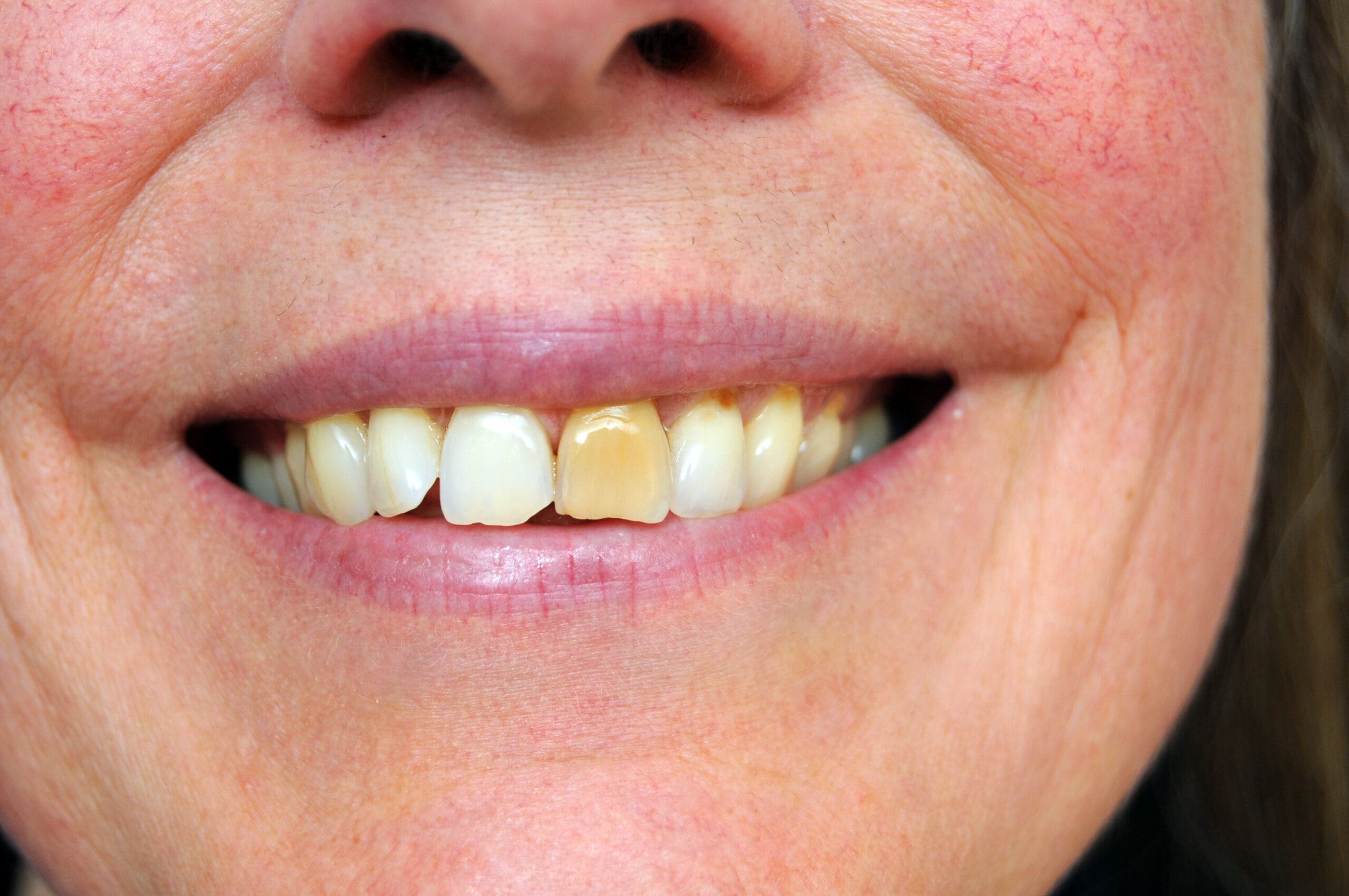What are intrinsic teeth stains, and how can they be addressed? Intrinsic teeth stains occur beneath the surface of the tooth, often requiring professional dental treatments to improve their appearance. Various options are available, each targeting the discoloration from within the tooth structure.
Intrinsic Teeth Stains
Intrinsic teeth stains are discolorations that occur beneath the surface of the tooth, often resulting from factors such as medication use, trauma, or excessive fluoride exposure during tooth development. These stains can be more challenging to address compared to extrinsic stains, which affect the outer layer of the teeth. One common approach to managing intrinsic teeth stains is through professional teeth whitening options, which aim to lighten the color of the teeth by targeting the deeper layers where these stains reside.
Professional teeth whitening options typically involve treatments administered by dental professionals, utilizing specialized techniques and materials designed to penetrate the enamel and address intrinsic discoloration. These methods can vary in their approach and effectiveness, depending on the nature and severity of the stains. For more information on different types of stains and their treatments, you can explore Types of Teeth Stains and How to Treat Them Naturally. Understanding the underlying causes and available treatment options is essential for those seeking to improve the appearance of their teeth affected by intrinsic stains.
Foods and Drinks to Avoid
Intrinsic teeth stains can be a persistent issue, often resulting from the consumption of certain foods and beverages that penetrate the enamel and affect the inner layers of the teeth. Dark-colored drinks such as coffee, tea, and red wine are notorious for contributing to these deep stains. Additionally, foods rich in artificial coloring or those that are highly acidic can exacerbate the discoloration by weakening the enamel, making it easier for stains to set in.
While intrinsic teeth stains are more challenging to address than surface stains, being mindful of dietary choices can play a role in managing their appearance. For those seeking professional solutions, exploring options like Bozeman’s Top Teeth Whitening can provide effective results in combating these stubborn stains.
Importance of Regular Dental Cleanings
Regular dental cleanings play a crucial role in maintaining oral health and can be particularly beneficial for individuals dealing with intrinsic teeth stains. While intrinsic stains are located beneath the surface of the tooth and may not be directly removed through cleaning, routine dental visits help in identifying and monitoring these stains over time. Dental professionals can assess the extent of intrinsic teeth stains and provide guidance on maintaining overall dental hygiene, which is essential for preventing additional staining and ensuring the health of your teeth. Regular cleanings also allow for early detection of any underlying issues that may contribute to the development or worsening of intrinsic teeth stains, supporting long-term oral health.
Whitening Toothpaste and Mouthwash
When it comes to addressing intrinsic teeth stains, many individuals consider the use of whitening toothpaste and mouthwash as part of their oral care routine. These products are formulated to help maintain a brighter smile by targeting surface stains and promoting overall oral hygiene. While they may not directly alter the deeper discoloration associated with intrinsic stains, they can contribute to a cleaner and more polished appearance of the teeth. For those interested in learning more about intrinsic teeth stains and oral health, Stone Dental Lodge, a trusted Bozeman Dentist, offers valuable insights and information.
Benefits of Electric Toothbrushes
Electric toothbrushes have gained popularity for their ability to enhance oral hygiene, which can be beneficial for individuals dealing with intrinsic teeth stains. These advanced toothbrushes are designed to provide a more thorough cleaning compared to manual brushing, thanks to their oscillating or vibrating bristle movements. This enhanced cleaning action can help maintain overall oral health by effectively removing plaque and food particles, which may contribute to the appearance of stains. While intrinsic teeth stains originate from within the tooth, maintaining good oral hygiene with an electric toothbrush can support the health of your teeth and gums, potentially reducing the risk of additional surface staining.
Role of Dental Veneers
Dental veneers play a significant role in addressing intrinsic teeth stains, which are discolorations that occur beneath the surface of the tooth. These stains can result from various factors, including certain medications, excessive fluoride exposure, or trauma to the teeth. Unlike extrinsic stains that affect the outer layer of the teeth, intrinsic stains are more challenging to treat with traditional whitening methods. Dental veneers, which are thin shells custom-made to cover the front surface of teeth, offer a cosmetic solution by masking these deep-seated stains and providing a uniform appearance. By opting for veneers, individuals with intrinsic teeth stains can achieve a brighter and more aesthetically pleasing smile without altering the underlying tooth structure.
Laser Teeth Whitening Treatments
Laser teeth whitening treatments have emerged as a popular option for addressing intrinsic teeth stains, which are discolorations that occur beneath the surface of the tooth enamel. This advanced procedure involves the use of laser technology to enhance the effectiveness of a whitening agent applied to the teeth. The laser activates the whitening agent, allowing it to penetrate deeper into the tooth structure and target stubborn intrinsic stains that traditional whitening methods may not effectively address. As a result, laser teeth whitening treatments can offer a more comprehensive approach to achieving a brighter smile by focusing on the underlying causes of discoloration.
Impact of Smoking on Teeth Stains
Smoking is a well-known contributor to intrinsic teeth stains, which are discolorations that occur beneath the surface of the tooth enamel. The tar and nicotine found in tobacco products can penetrate the enamel and settle into the dentin, the layer beneath the enamel, leading to deep-seated stains that are often more challenging to address than surface stains. Over time, these substances can cause teeth to take on a yellow or brown hue, significantly affecting the overall appearance of one’s smile. The impact of smoking on intrinsic teeth stains highlights the complex nature of dental discoloration and underscores the importance of understanding the various factors that contribute to this condition.
Choosing the Right Whitening Strips
When it comes to addressing intrinsic teeth stains, selecting the appropriate whitening strips can be a crucial step in your journey towards a brighter smile. Intrinsic teeth stains, which occur beneath the surface of the tooth enamel, can be more challenging to treat than extrinsic stains. Whitening strips are a popular option for many seeking to improve the appearance of their teeth, as they are designed to gradually lighten the color of teeth over time. Understanding the different types of whitening strips available and how they interact with intrinsic teeth stains can help you make an informed decision that aligns with your dental goals.
Conclusion
Understanding intrinsic teeth stains and exploring treatment options can help you achieve a brighter smile; for more information, call 615-542-5123 or check out our Google Maps reviews.

